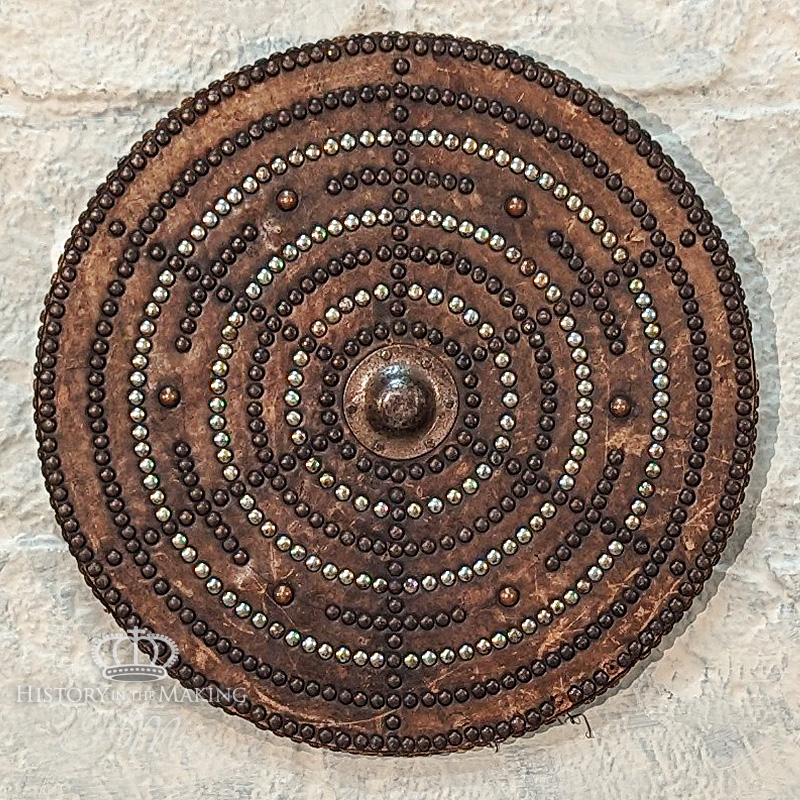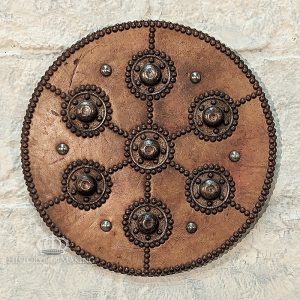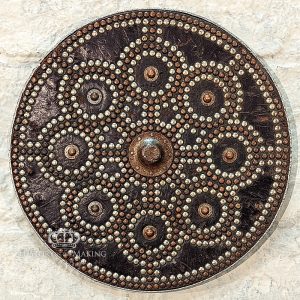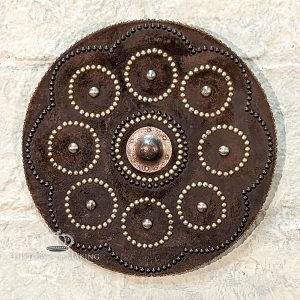17C-Scottish ‘Targe’ Shield- type 3
Targe (from Old Franconian targa ‘shield’, Proto-Germanic *targo ‘border’) was a general word for shield in late Old English. Its diminutive, target, came to mean an object to be aimed at in the 18th century.
From the late 16th century, until the Battle of Culloden in 1746, the Scottish Highlander’s main means of defence in battle was his targe.
Targes are generally round shields between 18 in and 21 in (45–55 cm) in diameter. The inside of the targe was formed from two very thin layers of flat wooden boards, with the grain of each layer at right angles to the other. They were fixed together with small wooden pegs, forming plywood. The front was covered with a tough cowhide, which was often decorated with embossed Celtic style patterns. This was fixed to the wood with many brass, or in some cases, silver, nails, and occasionally brass plates were also fixed to the face for strength and decoration. Targes generally had center bosses of brass




